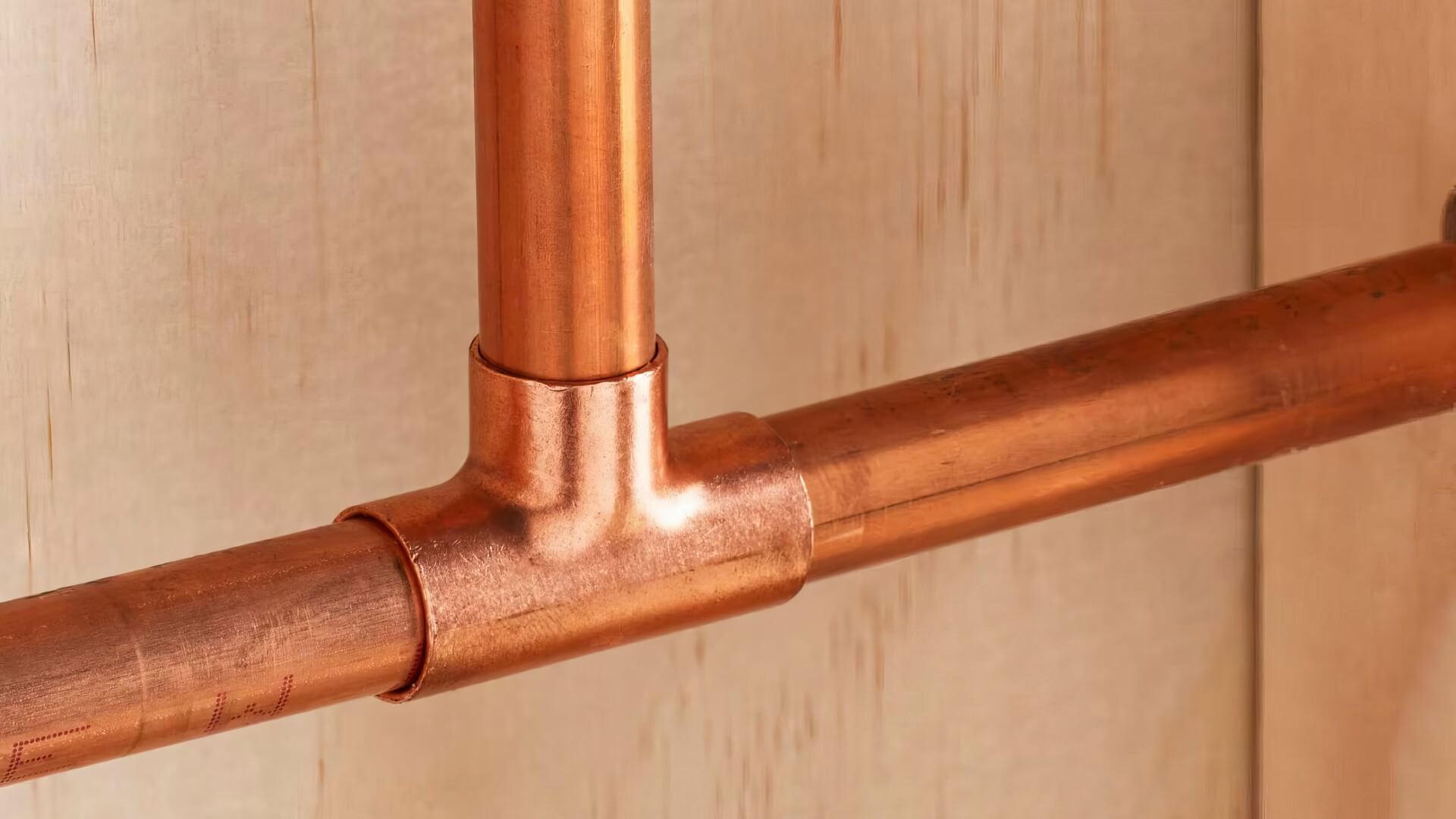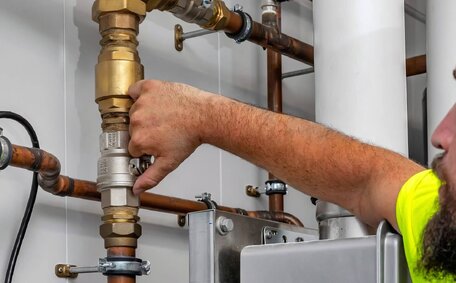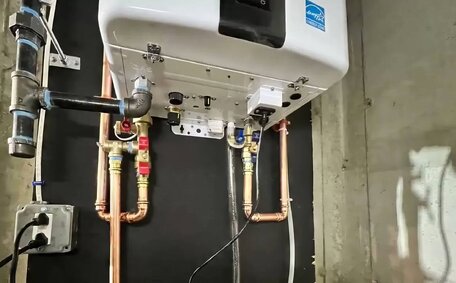Introduction to Pipe Relining and Inspections
Pipe relining, a trenchless technology, involves inserting an epoxy resin liner within old pipes to create a robust and durable new pipe. This process adeptly avoids traditional plumbing issues, being minimally invasive as it does not require excavating pipes, thus creating a pipe within existing structures for a swifter, cleaner, and more cost-effective alternative than traditional pipe replacement methods.
Our team ensures that pipe relining shields your home from leaks, root intrusions, and corrosion, offering a dependable plumbing solution.
A CCTV drain camera inspection reveals that the epoxy liner effectively creates sturdy new pipes inside the existing ones, firmly bonded to the inner walls.
Yet, even the sturdiest relined sewer pipes benefit from regular inspections with advanced CCTV technology.
Factors such as ground movement, tree roots, compromising your drain pipes, or plain wear-and-tear can diminish their integrity over time, underscoring the need for regular drain inspection. It’s crucial to have your relined sewer inspected every 5 years using CCTV pipe cameras. Trained professionals carefully examine the interior condition of pipes and identify potential problems early.
Regularly inspecting your relined pipeline system is key to understanding its longevity and supports proactive maintenance for enduring performance. This prevents emergency plumbing calls and extensive dig-ups down the track.
Getting your pipes regularly inspected for issues allows for timely interventions with new linings, preventing blockages or bursts. Investing in regular inspections now can prevent costly repairs and property damage later.
Recommended Frequency for Inspecting Relined Pipes
Relined pipes should be inspected every 1-2 years, though areas experiencing heavy use, tree roots, soil movement, or special drainage issues may need more frequent checks.
Annual inspections of all pipe interiors enable technicians to measure the efficacy of plumbing relining, meticulously examining the interior state and identifying potential frailties before they escalate. Pipe issues such as cracks, leaks, or root intrusions can be identified early and addressed expediently.
During pipe relining inspections, plumbers evaluate flow capacity and pressure in sewer pipes, as well as check pipe alignments and junction connections for any signs of breakage. Any deviations from normal are critical nuances you need know about pipe health, as they can indicate developing faults that might affect your property.
Although relined pipes have an excellent life expectancy, questions about their durability and damage resistance over time are common. Proactive services that clarify how does pipe relining work, including inspections on a 1-2 year basis, help safeguard your pipes and prevent emergency plumbing situations down the track.
What to Look for When Inspecting Relined Pipes
When inspecting relined pipes, trained plumbers thoroughly assess the interior condition to ensure there are no oversights, using CCTV cameras. They identify where relining can strengthen the pipe system by looking for potential issues like:
- Cracks or holes - Even tiny cracks can lead to leaks or root intrusions down the track.
- Blockages - Anything preventing flow into pipe sections that have been relined to address buildups, collapsed areas, or intruding roots.
- Junction faults - Connections between pipes should join smoothly without gaps or misalignments.
- Loss of roundness - Oval or flattened sections indicate pipe damage or ground movement.
- Pinholes - Small breaches in the epoxy liner may signal wider issues.
Technicians evaluate the efficacy of the relined pipes on water flow, pressure maintenance, and sediment management that could affect pipe function. Any abnormalities, blockages or weaknesses identified in your damaged pipes can then be repaired promptly before they worsen.
Detecting potential pipe problems early is crucial; addressing minor issues promptly can circumvent costly emergency repairs later on.
Using Technology Like CCTV Cameras to Inspect Relined Pipes
Drain cameras are essential for inspecting the interior condition of newly relined sewer pipes. These pipe cameras are critical in showing what pipe relining entails, equipped with powerful lights and high-resolution video capturing capabilities to provide clear visibility inside pipes.
Technicians skilfully manoeuvre CCTV cameras through drainage systems, scrutinising pipes for any faults or blockages to ensure their integrity. The video footage captured is meticulously reviewed to pinpoint and assess any potential issues, representing best practices in pipe relining.
Unlike traditional excavation methods, the non-invasive CCTV inspections we use do not require disrupting your sewer line. They can accurately locate exact problem spots without disturbing the surrounding property or landscaping.
CCTV technology is particularly effective for inspecting relined pipes in densely populated or environmentally sensitive areas, offering valuable insights without disruption. This technology allows for precise issue identification and repair with minimal community disruption.
Overall, CCTV drain cameras are vital for conducting non-destructive inspections of the existing pipe to detect emerging faults early. This allows for prompt maintenance to keep relined pipes flowing optimally for years to come.
Signs That Your Relined Pipes May Need Replacement
Warning signs such as frequent clogs and low water pressure may indicate that relined pipes are failing and need repair or replacement. These can include:
- Frequent clogs or a recurring blocked drain - Debris buildup, intruding tree roots, cracks, or collapsed damaged pipes could be obstructing flow.
- Noticeable low water pressure - Narrowed pipes from damage or crushed sections reduce pressure.
- Leaking pipe joints - Gaps, cracks, eroded seals or improper pipe connections can spring leaks.
- Visible drips or water pooling around pipes - Cracks or holes in the epoxy liner and pipe exterior may cause water to escape.
- Strange gurgling noises - Suggests air pockets, obstructions, or draining problems within pipes.
If such signs emerge and there’s no obvious cause, it’s a good idea to get your pipes examined for premature failure due to factors such as ground movement, installation inaccuracies, or excessive water volumes. It might become necessary to re-dig and replace your damaged pipes in severe cases to permanently solve issues.
Our specialised pipe relining services include thorough CCTV pipe inspection and any required repairs. We can guide you to the ideal relining solutions, ensuring repairs or new linings are perfectly tailored to your situation.
Getting Professional Drain Inspections After Pipe Relining
It is highly recommended to have professional drain inspections within 1-2 years of completing pipe relining to ensure your plumbing’s health. As experts in trenchless plumbing, Epping Plumbing’s certified technicians utilise state-of-the-art CCTV cameras to thoroughly examine the interior condition of relined pipes.
We perform thorough sewer inspections to spot potential issues that may affect the longevity of the pipe relining. Our detailed video footage ensures we offer the best pipe relining solutions, revealing how does pipe relining address any problem areas with precision, crucial for prompt repair. This preventative maintenance is what you need to know about to ensure pipe integrity and longevity, protecting your investment.
Our non-invasive CCTV inspections are preferred for your pipeline network as they avoid disruptive digging up that could damage your nearby infrastructure. We can accurately assess pipes without needing to dig up the area around your property, making our services perfectly suited for built up and environmentally sensitive areas throughout Epping.
Our extensive expertise in pipe relining guarantees jobs that meet strict quality standards, offering clients complete peace of mind. Reach out to our experts when choosing pipe relining to schedule comprehensive CCTV inspections of your sewer system and keep your relined pipes flowing optimally for decades to come.
Balancing Cost and Risk to Determine Inspection Frequency
Compared to potential emergency repairs, regular pipe checks usually represent a cost-effective preventative approach. A standard CCTV inspection from Epping Plumbing costs around $150, significantly less than emergency pipe replacement, underscoring pipe relining’s cost efficiency. Factoring in possible water damage or business disruption from burst pipes, prevention is especially critical.
Annual inspections maintain relined pipes’ wellbeing and inform decisions on the need for less frequent, biennial assessments. High-risk pipes, such as those prone to becoming blocked pipes, may necessitate 6-12 month inspections if previous problems occurred.
Comprehensive pipe inspections are a proactive strategy to maintain optimal functionality of your pipe system. Identifying minor faults early keeps repair costs contained while avoiding major disasters like sewer collapses or sinkhole formation down the track. For approximately $100-250, our services like Epping Plumbing pinpoint emerging issues and provide guidance on solutions, helping to avert costly repairs from serious pipe failures.
Preparing for and Ensuring Ongoing Pipe Integrity
Proper ongoing maintenance is key to the longevity of relined pipes and avoiding costly emergency repairs in the future. Home and business owners can take several preventative measures and understand how does work to safeguard pipe integrity, including:
- Monitor your sewer lines for leaks, unusual noises, or drainage problems that could signify damage. Contact Epping Plumbing promptly for inspection and pipe repair.
- Avoid pouring fats, oils or harsh chemicals down drains that could build up and cause blockages over time.
- Regularly trim tree roots and plants near your sewer lines to prevent them from breaking through pipe walls.
- Redirect drainage or runoff away from pipes to limit excess moisture damage.
- Have professional pipe inspections by Epping Plumbing’s experts every 1-2 years to detect potential faults early using CCTV cameras.
After major weather events or ground shifts that could affect pipes, have your plumbing system evaluated. Our maintenance plans include pipe relining options to enhance your sewer system’s durability.
Essentially, invest in proactive check-ups now to avoid exponentially bigger repair bills for your house later. With 50+ years of expertise, For top-notch maintenance and inspection of your plumbing system across Sydney, reach out to us at Epping Plumbing. Contact us today via phone, email or online appointment to schedule an inspection or discuss tailored solutions for your home or business.






